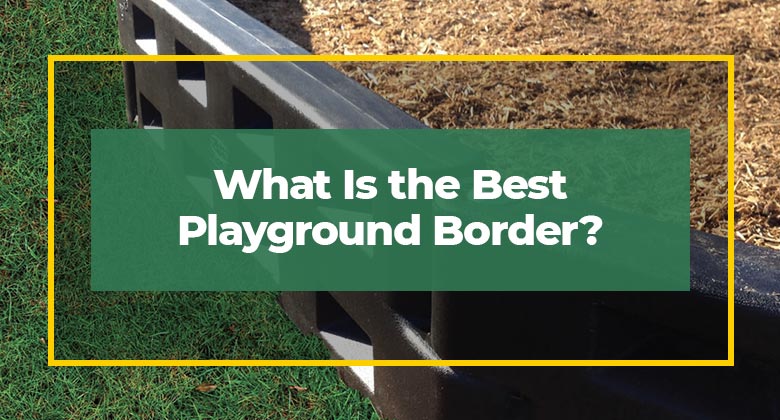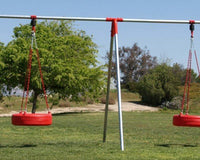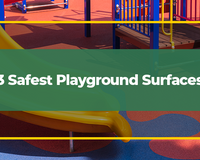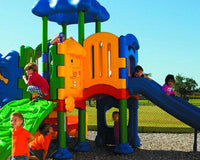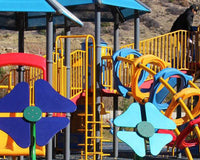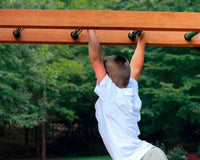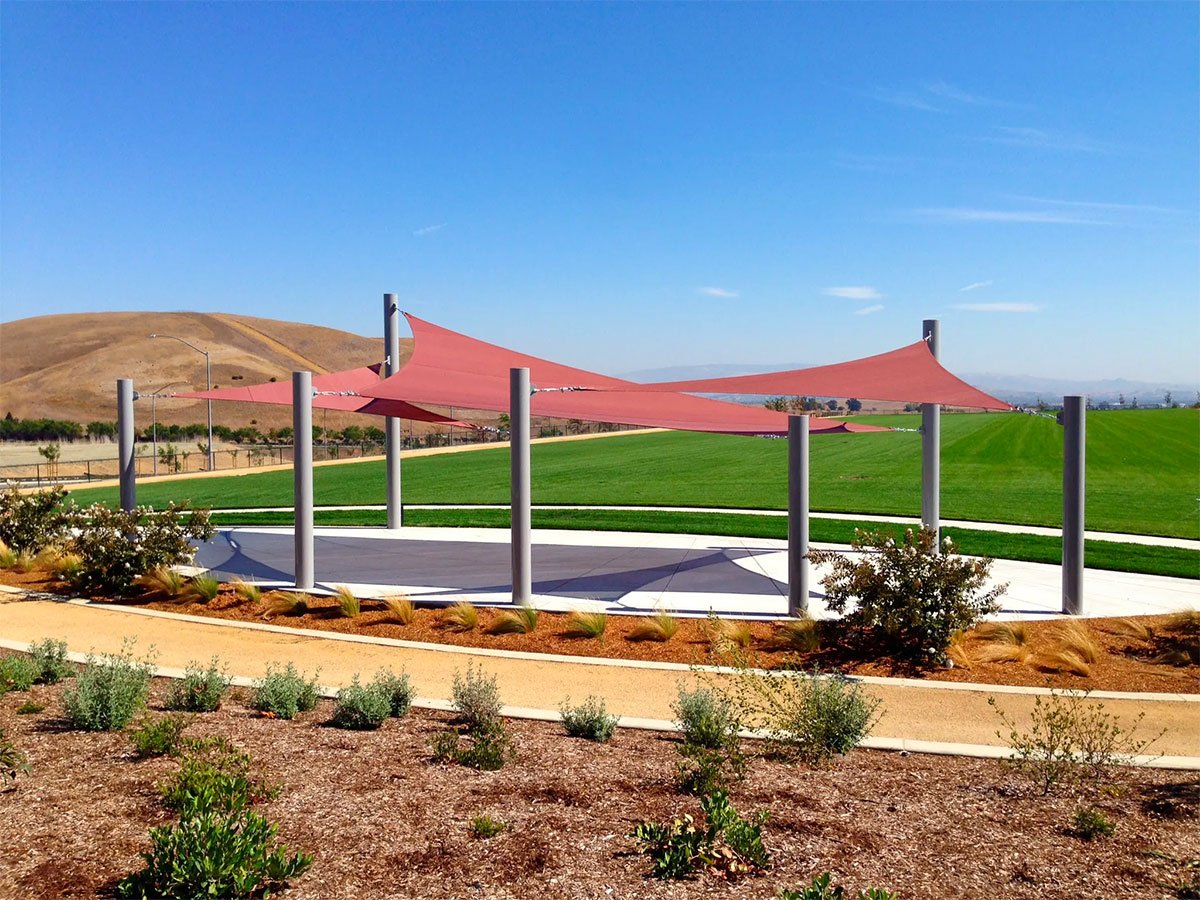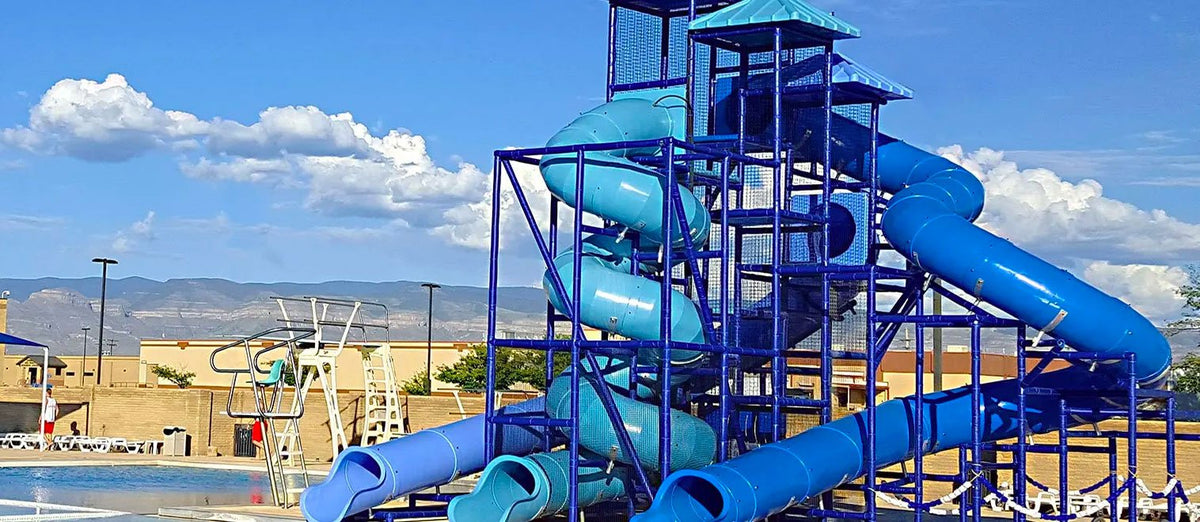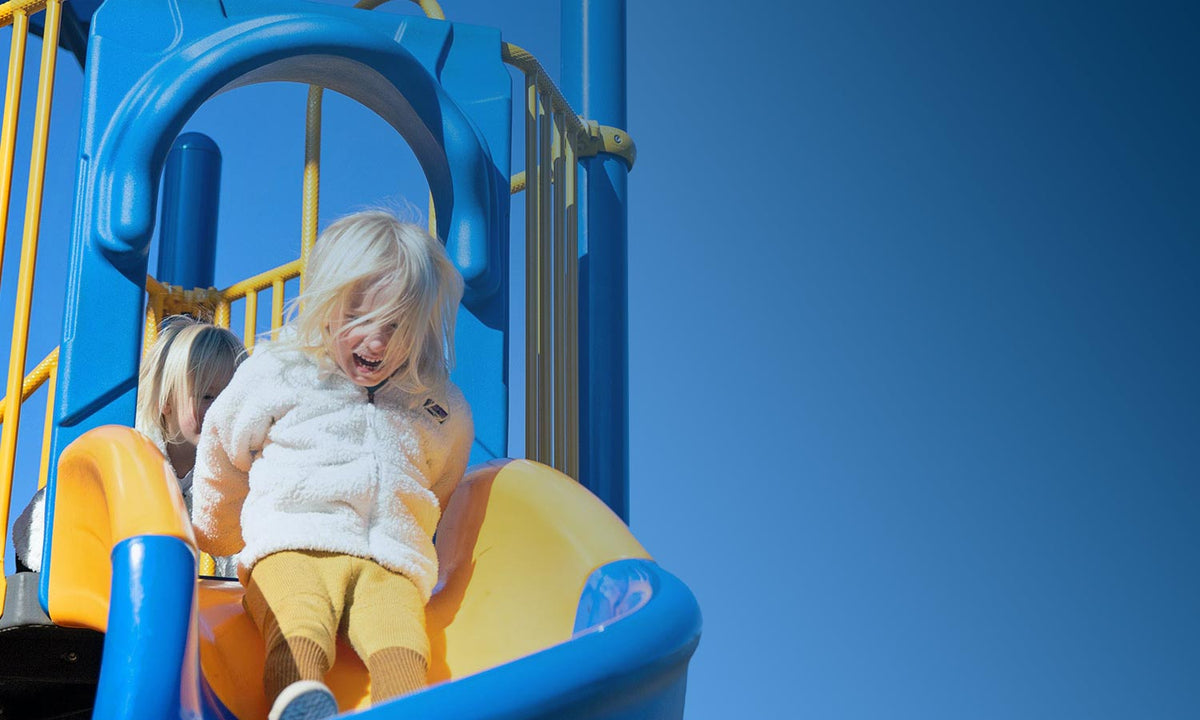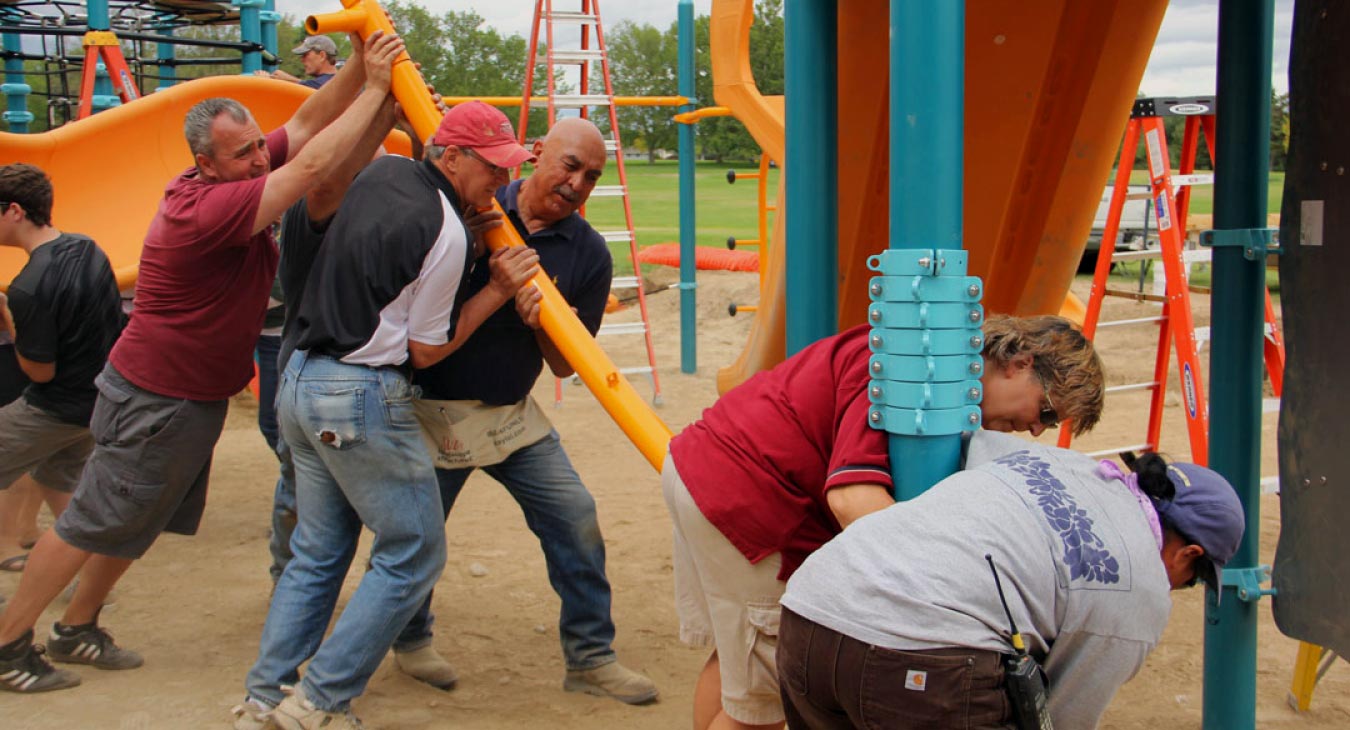While planning out your own playground is exciting (think of all the swings and slides you can add), there is one thing you need to keep in mind: what will your playground border look like?
Your playground border is what helps keep everything intact. Without a properly made border, the mulch or woodchips could all tumble to the ground and make everything messy.
The good news is there are all kinds of materials and ways to make a playground border. Every playground is different, so one playground border might not work for yours. Still, we want to look at the benefits of playground borders, what materials you can use, and what ultimately makes the best playground border.
Benefits of Playground Borders
Here are just a few reasons why you should consider adding a border to your playground.
Safety First
The whole reason you installed mulch at your playground is so that you’d have the infrastructure in place to soften a fall. All playground equipment have a “maximum fall height” in their specifications. This measurement is the maximum distance a child would fall from the equipment – you’ll want to spec your surface materials to cushion for that height.
Letting your mulch just spread out without being contained by a border will greatly reduce the cushioning effect when you most need it. Playground borders keep the mulch in place for the children who need it when (not if) they fall.
They Keep Everything Orderly
Besides the fantastic playground equipment, you might notice that every playground with some edging looks clean. The mulch and woodchips stay inside the border, and you can tell when the park begins and ends. Without borders, the park might look like a bunch of swings and slides on a pile of mulch, which does not always look appealing.
If the park is next to a sidewalk or woods area, a playground border keeps playground materials inside the park's borders. Plus, there is something satisfying about a clean line between playgrounds and the surrounding grass.
Containing Mulch is Cost-Effective
Depending upon what surfacing you use at your playground, replacing the materials may not be something you want in your annual operating budget. Borders make sure that rain and weather doesn’t carry your mulch off to the storm drains while letting the rainwater flow right through.
Clean Borders Make Cleanup Easy
If a park has a cleanup crew, borders help make that job easier. For example, without mulch or woodchips scattered on a playground's edges, a cleanup crew can focus on cleaning the equipment itself instead of trying to straighten out the border beforehand.
Borders Show Where Children Can Play
Playground borders sometimes designate where children are supposed to play or even where the park's boundaries are. When you see a border surrounding a park, you can assume that whatever exists outside that border is not an official part of the park.
In some cases, you can use park borders to teach children about boundaries. Even with the border in place, where do they think the park begins and ends?
The border itself might even be a source of play if it is wide enough to walk on. Your children can imagine it like a tightrope at a circus or a vine in the jungle.
Types of Playground Borders
You have probably seen a couple of playground borders in your neighborhood. Each one has specific benefits, so let us go over those now.
Wood
Wood is probably the most old-fashioned of all playground borders. You often see this in older parks with more traditional playground equipment or when the park is smaller.
Wood also provides a more understated appearance, blending in with the mulch or woodchips inside the playground. Some parks may have a nature theme, or the equipment is wooden, so wooden borders fit in with that theme.
You do have to be careful with wood because it is not the most forgiving of playground materials. Children may trip and fall over the border and hurt themselves on the hard wooden surface. If you do not properly varnish or treat the wood, it could cause splinters and scrapes.
Do not skimp out on decent wood if you are planning a wooden playground border. Make sure the wood is smooth and strong enough to withstand a few kicks. You may also need some woodworking skills to install the border properly.
On the other hand, wood is easy to trim and fit precisely to your desired measurements. Remember to measure twice and cut once.
Now, when we say you need woodworking skills, we do not mean expert skills. Sometimes a rustic, unfinished look is excellent for a particular park. Just make sure that the wood is sanded and finished to minimize the possibility of scratches and cuts.
A wooden playground border may need extra care from time to time. You will have to wash and treat the wood every couple of months to keep it from drying out and aging too fast.
Composite Wood
A more sustainable and longer-lasting option than wood is the composite wood border. Technically made of plastic and wood, this product outlasts wood while blending in and achieving a similar look to wood.
Due to the durability of this border, you can count on them even though they may be smaller than the larger wood railroad tie. You can go with a lower profile and know it’ll hang tough for years to come. They can also be very simple to install.
Like plastic and rubber borders, the composite wood border doesn’t splinter quite like a standard wood product, which is great for little ones pushing small cars along your borders.
Plastic
You often see plastic playground borders on newer parks or parks with more colorful equipment. Most playground equipment comes from plastic, so plastic borders match that aesthetic.
One benefit to plastic playground borders is that they do not rust or rot. At worst, they might get a little dirty, but you can fix that with a bit of soap and water. Plastic comes in many fun colors and thicknesses, so there is a perfect size, shape, and color for your playground out there.
Plus, plastic is safe for your child to play around and will not cause as many scrapes or splinters as wooden borders. Some also sport a ruler directly on the border, so that you know whether or not you have enough mulch at your playground.
Classic Plastic Playground Borders
The material is also easy to install. Several playground equipment companies sell plastic borders that click into place with little hassle. Sometimes all it takes is a galvanized spike and a few swings of a hammer, and you are ready to go. You just need to calculate how many pieces you will need, and then you can place them in whatever shape you like for your playground.
Besides being safe for children, plastic is also versatile in creating shapes. You can create a plain old square border or bend it in fun and exciting ways.
Rubber
Rubber makes an excellent playground material for people looking to get a little creative. Rubber can bend and twist in ways that wood and plastic cannot, so you can create interesting linework with your playground border.
Like plastic playground borders, rubber is forgiving for children who might trip and fall over the border. At worst, your child might get a slight bruise from a solid hit, and the rubber should stay intact.
Shopping Rubber Playground Borders
Rubber also presents some interesting opportunities for DIY playground borders. For example, you make a border entirely out of old tires. This can be fun for children to play and jump in and will fit amazingly with a playground themed after transportation things like cars, buses, or trucks.
We should note that all these materials are lightweight and tough. It is not hard to carry them around, and it does not take too long to install them. Except for rubber, these materials would also make excellent playground ramps to make your playground more accessible.
How to Determine the Length of Your Playground Border
If you create your own playground border, you will need to do a little math. Do not worry: it is easy enough for a third grader to do (you can even get your kids involved in this step if you want).
Mark the Borders of Your Playground
This step gives you a good idea of how big the playground is and where you will place your border materials. You can mark the borders using stakes and string and measure between the stakes with a tape measure.
Another consideration is to check out how large of a use zone that your playground equipment needs. Almost all playground equipment requires at least 6 feet of clearance around the equipment for safe running and playing. Swings obviously will require more space for the swinging area, which is typically twice the height of the swing – 20 feet on either side of a 10 foot high swing, for example.
For best results, choose a flat playground area since the uneven ground will be more challenging to work with, and you may need more materials to help the border stay properly in place.
Decide Which Material You Will Use
Each material discussed above will cost different amounts per piece and come in different sizes.
Calculate Your Linear Width and Length
Knowing these measurements will allow you to decide how many units you need to make your border. You can find a playground border calculator online to assist you. Some calculators can also help you with how much playground mulch to fill the borders with.
Similarly, you should note how big your building pieces are. For example, our plastic playground border pieces come in 52-inch lengths, so you can decide how many of those pieces will fill your border.
Keep in mind that the math will be different with circular parks. Instead of calculating the perimeter, you will need to use the 2𝝅r formula. The value of "r" in this equation is the radius of your circle (half of your circle's diameter).
Final Thoughts
So, which is the best playground border? It depends on what kind of park you are building.
A wooden border might be best if you want a woodsy, rustic, nature-themed look. Again, you may need to treat this border with extra care so that it lasts longer and does not splinter.
A composite wood border could work well for you if you’re trying to achieve a wooden look with a low profile and maintain high durability. You’ll be happy with this for years to come.
A plastic border may be good if you want to create a fun, colorful border. It is a little more forgiving and flexible than a wooden border, and you can usually install them without a lot of time and hassle.
A rubber border is excellent for creating fun border shapes and is the most forgiving border material of the three. It is probably best if you have smaller children or children prone to falling over things.
The good news is that all these materials are pretty inexpensive. It also does not take long to calculate the length of your playground border and how many materials you will need. Whichever material you choose, you are another step closer to creating a cleaner, safer playground to help inspire creativity and imagination.


